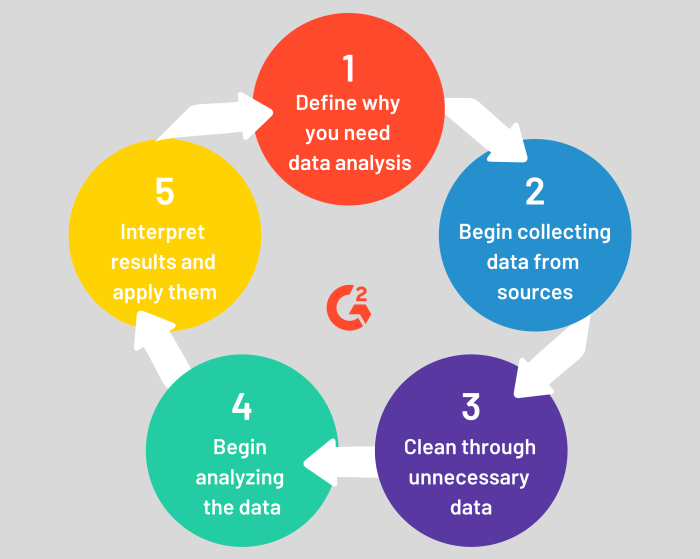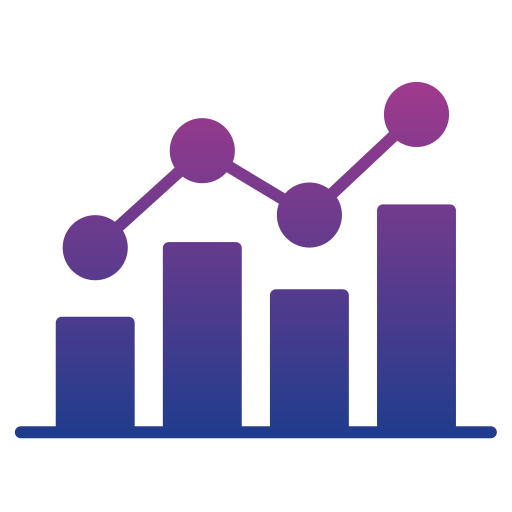AI for competitor analysis is revolutionizing how businesses gain a competitive edge. By leveraging the power of artificial intelligence, companies can now analyze vast amounts of data from various sources, gaining deeper insights into their rivals’ strategies, market trends, and customer behavior.
This shift from traditional methods allows businesses to make data-driven decisions, anticipate market shifts, and optimize their own strategies.
From understanding market trends and competitor profiling to predicting competitor moves and identifying emerging markets, AI empowers businesses with a comprehensive view of the competitive landscape. This data-driven approach provides a significant advantage in today’s rapidly evolving market, enabling businesses to stay ahead of the curve and make informed decisions.
Understanding AI in Competitive Analysis

In today’s competitive business landscape, gaining a comprehensive understanding of your competitors is crucial for success. Artificial intelligence (AI) has emerged as a powerful tool for gathering and analyzing data from various sources, providing businesses with valuable insights into their competitive environment.
This section will explore how AI is transforming competitive analysis, highlighting its advantages and providing examples of AI tools and techniques.
AI for Data Gathering and Analysis
AI-powered tools can effectively gather and analyze data from a wide range of sources, including:
- Web scraping:AI algorithms can extract relevant data from websites, such as product descriptions, pricing information, and customer reviews.
- Social media monitoring:AI can track brand mentions, customer sentiment, and competitor activity on social media platforms.
- News and industry publications:AI can analyze news articles, industry reports, and other publications to identify emerging trends and competitor strategies.
- Market research databases:AI can access and analyze data from market research firms, providing insights into market size, growth potential, and customer demographics.
AI’s ability to process large volumes of data quickly and efficiently allows businesses to gain a more comprehensive understanding of their competitive landscape.
Advantages of AI in Competitive Analysis
AI offers several advantages over traditional competitive analysis methods:
- Improved accuracy and efficiency:AI can analyze data with greater speed and accuracy than human analysts, reducing the risk of errors and biases.
- Real-time insights:AI can continuously monitor and analyze data, providing businesses with real-time insights into competitor activity and market trends.
- Identification of hidden patterns:AI can identify patterns and insights that may be missed by human analysts, uncovering valuable opportunities and threats.
- Automated reporting:AI can generate automated reports and dashboards, providing businesses with easily digestible and actionable insights.
Examples of AI Tools and Techniques
Several AI tools and techniques are commonly used in competitive analysis:
- Sentiment analysis:AI algorithms can analyze customer reviews and social media posts to gauge public sentiment towards competitors’ products and services.
- Market research:AI can analyze market data to identify growth opportunities, target audiences, and competitor strengths and weaknesses.
- Competitive intelligence:AI can track competitor activity, including new product launches, pricing changes, and marketing campaigns, providing businesses with early warning signals.
- Predictive analytics:AI can use historical data to predict future market trends and competitor behavior, allowing businesses to make informed decisions.
For example, a company selling sportswear might use sentiment analysis to understand customer reactions to a competitor’s new shoe release. AI can analyze social media posts and online reviews to identify positive and negative sentiment, providing valuable insights into the product’s reception.
Data Sources for AI-Powered Competitive Analysis

AI-powered competitive analysis relies heavily on data, and the quality and diversity of data sources significantly influence the accuracy and depth of insights generated.
Types of Data Sources
Different types of data sources provide unique perspectives on competitors, offering a comprehensive understanding of their strategies, performance, and customer sentiment.
- Social Media Data: Platforms like Twitter, Facebook, Instagram, and LinkedIn offer valuable insights into customer perceptions, brand sentiment, and competitor marketing campaigns.
- News Articles and Publications: News articles, industry publications, and press releases provide information on company announcements, market trends, and competitor strategies.
- Financial Reports: Financial statements, including income statements, balance sheets, and cash flow statements, provide insights into competitor financial performance, profitability, and investment activities.
- Customer Reviews and Feedback: Online platforms like Amazon, Yelp, and Google Reviews offer valuable data on customer satisfaction, product quality, and competitor strengths and weaknesses.
- Website Data: Website analytics, content, and design provide insights into competitor target audience, marketing strategies, and product offerings.
- Patent and Trademark Data: Patent and trademark databases reveal competitor innovation, intellectual property strategies, and future product development plans.
- Industry Reports and Market Research: Industry reports and market research data provide comprehensive information on market trends, competitive landscape, and growth opportunities.
Extracting Insights from Unstructured Data, AI for competitor analysis
AI algorithms, particularly natural language processing (NLP) and machine learning (ML), can extract valuable insights from unstructured data sources like social media and online forums.
- Sentiment Analysis: AI algorithms can analyze text data to identify customer sentiment towards competitors, their products, or their services. For example, analyzing social media posts can reveal whether customers are positive, negative, or neutral about a competitor’s new product launch.
- Topic Modeling: AI can identify key themes and topics discussed in unstructured data. This allows businesses to understand the most important issues and concerns related to competitors, their products, or their industry.
- Entity Recognition: AI can identify and extract relevant entities from text data, such as company names, product names, or key personnel. This helps in tracking competitor activities and identifying potential collaborations or partnerships.
- Trend Analysis: AI can analyze historical data to identify emerging trends in customer preferences, market dynamics, or competitor strategies. This allows businesses to anticipate future changes and adjust their own strategies accordingly.
Advantages and Disadvantages of Data Sources
Different data sources offer distinct advantages and disadvantages for AI-powered competitive analysis.
| Data Source | Advantages | Disadvantages |
|---|---|---|
| Social Media Data | Provides real-time insights into customer sentiment, brand perception, and competitor marketing campaigns. | Can be noisy and unstructured, requiring sophisticated AI algorithms for analysis. Data privacy and ethical considerations are important. |
| News Articles and Publications | Offers insights into company announcements, market trends, and competitor strategies. Provides a broader context for competitive analysis. | Can be biased and subjective. Requires careful filtering and analysis to extract relevant information. |
| Financial Reports | Provides objective insights into competitor financial performance, profitability, and investment activities. | Data is often historical and may not reflect current market conditions. Can be complex and require financial expertise for interpretation. |
| Customer Reviews and Feedback | Offers direct insights into customer satisfaction, product quality, and competitor strengths and weaknesses. | Data can be subjective and biased. May not represent the opinions of all customers. |
| Website Data | Provides insights into competitor target audience, marketing strategies, and product offerings. | Data may be incomplete or inaccurate. Requires technical expertise for extraction and analysis. |
| Patent and Trademark Data | Reveals competitor innovation, intellectual property strategies, and future product development plans. | Data can be complex and requires specialized knowledge for interpretation. May not reflect actual product development timelines or market success. |
| Industry Reports and Market Research | Provides comprehensive information on market trends, competitive landscape, and growth opportunities. | Data can be expensive and may not be specific to a particular competitor. May not reflect real-time market conditions. |
Conclusion: AI For Competitor Analysis
The integration of AI in competitor analysis is not merely a technological advancement but a paradigm shift in how businesses approach competition. By harnessing the power of AI, companies can unlock a wealth of valuable insights, anticipate market trends, and make informed decisions.
This data-driven approach empowers businesses to navigate the competitive landscape with confidence and stay ahead of the curve. As AI technology continues to evolve, its impact on competitive analysis will only grow, offering even greater opportunities for businesses to gain a competitive edge.
Questions and Answers
What are the limitations of AI in competitor analysis?
While AI offers powerful tools for competitor analysis, it’s essential to acknowledge its limitations. AI models are only as good as the data they are trained on, and biases in the data can lead to inaccurate insights. Additionally, AI may struggle to interpret complex, nuanced information, requiring human judgment to supplement its analysis.
How can I ensure the ethical use of AI in competitor analysis?
Ethical considerations are paramount when using AI for competitor analysis. Ensure data privacy, transparency, and fairness in data collection and model development. Regularly review and validate models to minimize bias and ensure ethical data practices.
What are some examples of AI tools for competitor analysis?
Several AI tools are available for competitor analysis, including Google Trends, Brand24, and Semrush. These tools offer features like sentiment analysis, market research, and competitive intelligence, providing valuable insights into competitor strategies and market trends.
